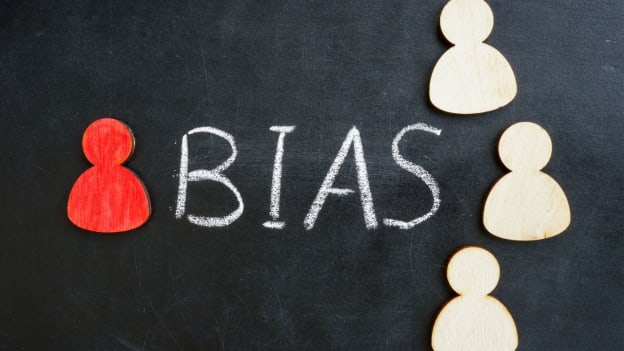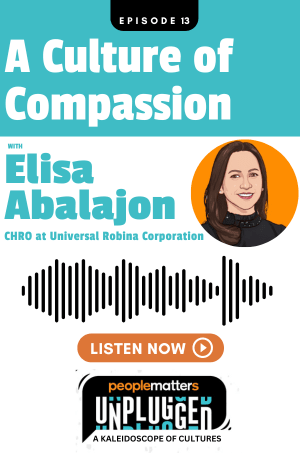Addressing unconscious bias at work

Bias in the workplace
Strictly speaking, bias refers to any prejudice against another person, particularly ones that are different from us. But put it in the context of the workplace and it evolves into a whole new discussion that involves diversity and inclusion.
Unfortunately, bias in the professional setting remains rampant today, with at least 39 percent of the employees saying they experience prejudice at work at least once a month, a study by consulting firm Deloitte showed.
An overwhelming majority of the employees in the Deloitte study said the biases they experienced came in subtle and indirect forms of microaggressions that made a strong negative impact on their overall productivity.
In fact, a separate study by the Harvard Business Review showed that employees who experience bias “on at least two dimensions” are 60 percent more likely to look for a job elsewhere and are likely to do it within the year.
The numbers only show that bias at work is a major contributor to attrition, something that companies need to address if they want to thrive in today’s market.
READ MORE: Stereotyping & unconscious bias in organizations
The most common types of workplace bias
Bias in the workplace comes in many forms. Employees may experience this in the hiring process, during engagement activities, or even in regular office scenarios. Knowing the different kinds of workplace bias will allow people to understand how it works and how to address them.
Confirmation bias
Perhaps the most common biases the exist in the workplace, and even the society at large, is confirmation bias. This happens when a person with pre-existing beliefs searches for people or information that confirm these presumptions. In the process, they tend to ignore information from other perspectives resulting in discrimination or even aggression to those who do not agree with them.
Conformity Bias
Not to be confused with the confirmation bias, conformity bias happens when a certain group of people, usually a large majority in the workplace, influence the way other people think and decide. When this “group-think” occurs, people find themselves pressured to conform to the majority’s ideas that often leads to ignore the viewpoint of certain workplace minorities.
Beauty bias
This particular type of bias happens when decisions are made based on the physical appearance or overall appeal of an employee. In most cases, even people who do not dress fashionably, or even those who do not have their hair done properly, fall victim to this common type of workplace bias. This can be isolating for an employee and can force one to resign.
Affinity bias
When a person makes decisions in favor of someone who has similar interests or someone who fondly reminds him of someone he knows from the past, affinity bias happens. The worst forms of affinity bias happens when managers favor team members whom he feels he has an affinity with over the others, even though this perceived affinity has no impact on their work.
Gender bias
One of the most talked about bias in the workplace, gender bias is usually seen in how employees are treatment based on their gender orientation or sexual preferences. Traditional workplaces usually have biases against women and LGBTQ+ employees – biases that reflect on pay equality and career advancement opportunities.
There are more types of bias that encompass age, race, ethnicity, religion, education, stereotypes, employment status, authority, intuition. and more – biases that are discussed in-depth in this People Matters report.
The difference between conscious vs unconscious bias
All the types of biases can furthered be classified into two categories: conscious and unconscious bias. Conscious bias is something done actively by choice, and most of the times, with full understanding of its consequences. Unconscious bias, meanwhile, can either be an action or an inaction done unconsciously.
In most cases, unconscious bias happens as a result of a person’s background, how he was raised, his influences, the community where he lives, and the friends he has made over the years. It is, in a nutshell, part of a person’s culture.
Unlike people who are consciously biased, the ones who make unconscious biased decisions have no idea about the impact of their actions or inactions, making them a bit insensitive to several underrepresented work groups in many instances.
For example, a person who grew up with misogynist parents are likely to say things that would offend women and LGBTQ+ colleagues. For him, some of the things he said are done in jest, but for the people on the receiving end, these “jokes” are more personal and discriminating.
Leaders are not exempted in making decisions out of unconscious biases. Even managers who have forged deep relationships with certain senior team members tend to decide or provide support in favor of these “work friends.”
The importance of addressing all biases at work
Unconscious bias can have a profound impact on employee morale. When individuals perceive that their contributions are undervalued due to bias, it can lead to disengagement, a decline in overall workplace satisfaction, and ultimately attrition.
Biases in the workplace, conscious or not, can have a significant drawback a company’s Diversity, Equity, and Inclusion (DE&I) efforts. Modern workplaces thrive on diversity and inclusion, and when biases get in the way, company growth ultimately takes a hit.
Worse, unconscious bias, if left unchecked, can lead to legal challenges and damage an organization's reputation. Proactively addressing biases not only ensures compliance with anti-discrimination laws but also protects the company's image, showing clients, customers, and partners a commitment to fairness.
On the flipside, when employees feel that their work is evaluated based on merit rather than bias, they are more likely to be motivated and perform at their best. Having happy and motivated employees is crucial today, at a time of worsening labor shortages.
The role of awareness in addressing unconscious bias
If unconscious bias is the poison, then education is the antidote. People who make unconsciously bias decisions often do so only because they are not aware of its repercussions. Making an effort to spread awareness is the best first step in addressing unconscious bias in the workplace.
But awareness has two levels in a company setting, the first one being individual awareness. While difficult, it is the responsibility of human resource leaders to create avenues of learning about the nature and impact of unconscious bias.
This can be done through by providing safe channels for reporting where HR leaders can identify and talk to the people involved in private, one-on-one sessions. Encouraging employees to reflect on their own biases and preconceptions is the first step in fostering a culture of inclusivity.
In an organizational scale, HR leaders can integrate educational materials about workplace biases in their new hire orientations, onboarding, regular performance assessment sessions, and even in engagement activities and regular internal communications.
The HR department can even seek the help of service providers in providing comprehensive training for leaders, as they will be the vanguards of diversity and inclusion in the workplace, setting an example for the broader workforce.
The best part of the business landscape today is that HR leaders are no longer alone when it comes to battling workplace bias. Modern technological tools are often accessible to most companies. AI-driven business platforms can help the HR leaders monitor and mitigate biases in the workplace.
Ultimately, HR leaders must remember that addressing unconscious bias in the work is not a one-time effort but a continuing process. People in organizations come and go, but a sustained campaign against bias will keep a workplace diverse and inclusive.















